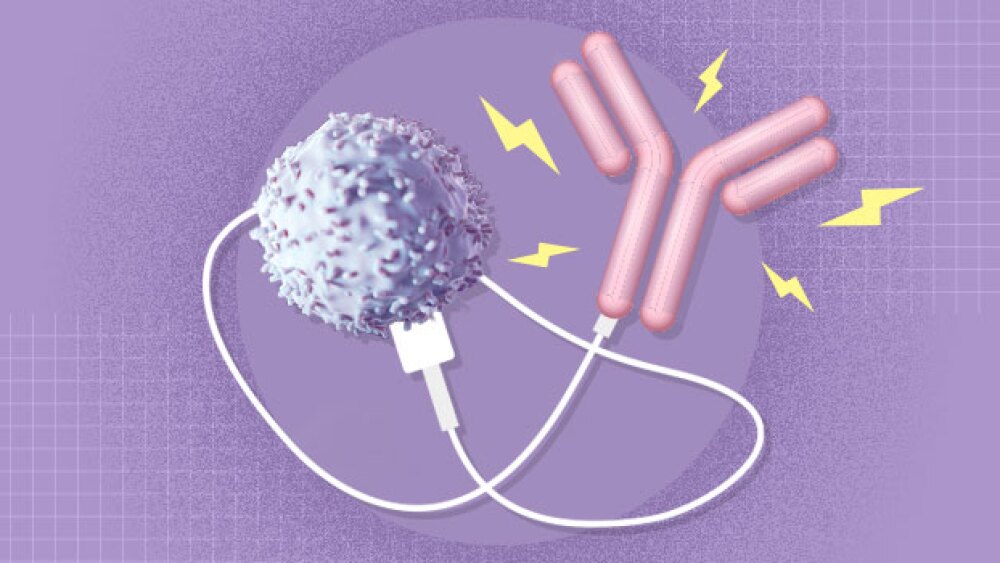Incyte (Nasdaq:INCY) today announced that positive data from the Phase 3 REACH3 study have been published in The New England Journal of Medicine (NEJM) demonstrating that treatment with ruxolitinib (Jakafi®) resulted in significantly improved outcomes in patients with steroid-refractory or steroid-dependent chronic graft-versus-host disease (GVHD) compared to best available therapy (BAT).
- Phase 3 REACH3 data show that ruxolitinib (Jakafi®) significantly improved overall response rate (ORR) at Week 24 (49.7% vs. 25.6%) with a higher best overall response rate (76.4% vs. 60.4%) vs. best available therapy among patients with steroid-refractory/dependent chronic graft-versus-host disease (GVHD) 1
- Additional new subgroup analysis demonstrated higher ORR for patients treated with ruxolitinib regardless of the individual organs involved at baseline1
- Chronic GVHD is a life-threatening complication of stem cell transplants and half of patients become refractory to or dependent on first-line steroids2,3
- REACH3 data serve as the basis for the supplemental New Drug Application (sNDA) undergoing review with the U.S. Food and Drug Administration (FDA)
WILMINGTON, Del.--(BUSINESS WIRE)-- Incyte (Nasdaq:INCY) today announced that positive data from the Phase 3 REACH3 study have been published in The New England Journal of Medicine (NEJM) demonstrating that treatment with ruxolitinib (Jakafi®) resulted in significantly improved outcomes in patients with steroid-refractory or steroid-dependent chronic graft-versus-host disease (GVHD) compared to best available therapy (BAT)1. The study’s main findings, previously presented at the 62nd American Society of Hematology (ASH) Annual Meeting, were published along with new subgroup analyses showing favorable overall response rate (ORR) at Week 24 for ruxolitinib across all major subgroups, including baseline individual organ involvement1. REACH3 is jointly sponsored by Incyte and Novartis.
“Results from the REACH3 study published in NEJM are extremely compelling and underscore the potential benefits ruxolitinib can offer appropriate patients facing the serious complications associated with chronic GVHD,” said Peter Langmuir, M.D., Group Vice President, Oncology Targeted Therapies, Incyte. “At Incyte, we remain committed to advancing our research and understanding of this complex disease, and will continue to work closely with the FDA to bring this innovative treatment to chronic GVHD patients, who currently have limited treatment options.”
The study found that treatment with ruxolitinib led to significant improvements in ORR at Week 24 (49.7% vs. 25.6%; odds ratio [OR], 2.99; P<0.001i), the primary endpoint of the study1. Also, best overall response (BOR) rate at any time up to Week 24 was achieved in 76.4% of patients in the ruxolitinib arm compared to 60.4% of patients in the BAT arm (OR, 2.17; 95% CI, 1.34-3.52)1. Ruxolitinib also demonstrated statistically significant and clinically meaningful improvements in key secondary endpoints1:
- Patients on ruxolitinib achieved longer failure-free survival (FFS) than patients receiving BAT (median FFS not yet reached vs. 5.7 months; hazard ratio, 0.37; 95% CI, 0.27 to 0.51; P<0.0001).
- Patients treated with ruxolitinib also had greater improvements in self-reported symptoms compared to BAT1 (modified Lee Symptom Scale [mLSS] responder rate: 24.2% vs. 11.0%; OR, 2.62; P=0.001)ii.
In addition, a new subgroup analysis included in the publication found that patients on ruxolitinib had better outcomes regardless of the individual organs affected at baseline1.
No new safety signals were observed in REACH3, and adverse events (AEs) attributable to treatment were consistent with the known safety profile of ruxolitinib1. The most common AEs of grade 3 or higher in the ruxolitinib vs. BAT arms were thrombocytopenia (15.2% vs. 10.1%), anemia (12.7% vs. 7.6%), neutropenia (8.5% vs. 3.8%) and pneumonia (8.5% vs. 9.5%). While 37.6% and 16.5% of patients required ruxolitinib and BAT dose modifications due to AEs, respectively, the percentage of patients who discontinued treatment due to AEs was 16.4% in the ruxolitinib arm vs. 7% in the BAT arm1. Mortality rates were similar across treatment arms (18.8% in the ruxolitinib arm vs. 16.5% in the BAT arm)1. Deaths reported as primarily due to chronic GVHD complications and/or its treatment were higher in the ruxolitinib vs. BAT arms (13.3% vs. 7.9%, respectively)1.
“Patients with chronic GVHD can experience severe and life-threatening symptoms in different organs around the body, which makes the disease more difficult to treat and increases the risk of poor outcomes,” said Dr. Robert Zeiser, University Hospital Freiburg, Department of Haematology, Oncology and Stem Cell Transplantation, Freiburg, Germany. “With these new results from REACH3, we can see more clearly the potential benefits of ruxolitinib for patients with chronic GVHD who have not adequately responded to first-line steroids.”
The REACH3 data serve as the basis for the Company’s supplemental New Drug Application (sNDA) for ruxolitinib for the treatment of steroid-refractory chronic GVHD in adult and pediatric patients 12 years and older, which was accepted for review by the U.S. Food and Drug Administration (FDA) and has a Prescription Drug User Fee Act (PDUFA) target action date of September 22, 2021.
GVHD is a condition that can occur after an allogeneic stem cell transplant (the transfer of stem cells from a donor) where the donated cells initiate an immune response and attack the transplant recipient’s organs, leading to significant morbidity and mortality. There are two major forms of GVHD: acute, which generally occurs within 100 days of transplant, and chronic, which generally occurs more than 100 days after transplant2. GVHD can affect multiple organ systems including the skin, gastrointestinal (digestive) tract and liver.
In 2019, Jakafi® (ruxolitinib) was approved by the FDA for the treatment of steroid-refractory acute GVHD in adult and pediatric patients 12 years and older, based on the positive results of the Phase 2 REACH1 trial4. Jakafi is marketed by Incyte in the U.S.; ruxolitinib (Jakavi®) is licensed to Novartis ex-U.S. Outside of the U.S., Novartis regulatory submissions for acute and chronic GVHD are underway.
The NEJM publication of the REACH3 results is available online.
About REACH3
REACH3 (NCT03112603), a randomized, open-label, multicenter Phase 3 study sponsored by Novartis and conducted in collaboration with and co-funded by Incyte, is evaluating the safety and efficacy of ruxolitinib compared with best available therapy in patients with steroid-refractory chronic GVHD.
The primary endpoint is overall response rate (ORR) at Day 1 of the Cycle 7 (Day 168) visit, defined as the percentage of participants demonstrating a complete or partial response. Secondary endpoints include change in the modified Lee chronic GVHD symptom scale score at Day 1 of Cycle 7, rate of failure-free survival (FFS) up to 36 months, best overall response (BOR), duration of response (DoR), overall survival (OS), among others. For more information about the study, please visit https://clinicaltrials.gov/ct2/show/NCT03112603.
About REACH
The REACH clinical trial program evaluating ruxolitinib in patients with steroid-refractory GVHD includes the randomized pivotal Phase 3 REACH2 and REACH3 trials, conducted in collaboration with Novartis. Positive data from the Phase 3 REACH2 study evaluating the safety and efficacy of ruxolitinib compared with best available therapy in patients with steroid-refractory acute GVHD were previously published in The New England Journal of Medicine.
The REACH program was initiated with the Incyte-sponsored REACH1 trial, a prospective, open-label, single-cohort, multicenter, pivotal Phase 2 trial (NCT02953678) evaluating ruxolitinib in combination with corticosteroids in patients with steroid-refractory grade II-IV acute GVHD. For more information about the study, including trial results, please visit https://clinicaltrials.gov/show/NCT02953678.
About Jakafi® (ruxolitinib)
Jakafi is a first-in-class JAK1/JAK2 inhibitor approved by the U.S. FDA for treatment of polycythemia vera (PV) in adults who have had an inadequate response to or are intolerant of hydroxyurea, in adults with intermediate or high-risk myelofibrosis (MF), including primary MF, post-polycythemia vera MF and post-essential thrombocythemia MF and for treatment of steroid-refractory acute GVHD in adult and pediatric patients 12 years and older.
Jakafi is marketed by Incyte in the United States and by Novartis as Jakavi® (ruxolitinib) outside the United States. Jakafi is a registered trademark of Incyte Corporation. Jakavi is a registered trademark of Novartis AG in countries outside the United States.
Important Safety Information
Jakafi can cause serious side effects, including:
Low blood counts: Jakafi® (ruxolitinib) may cause your platelet, red blood cell, or white blood cell counts to be lowered. If you develop bleeding, stop taking Jakafi and call your healthcare provider. Your healthcare provider will perform blood tests to check your blood counts before you start Jakafi and regularly during your treatment. Your healthcare provider may change your dose of Jakafi or stop your treatment based on the results of your blood tests. Tell your healthcare provider right away if you develop or have worsening symptoms such as unusual bleeding, bruising, tiredness, shortness of breath, or a fever.
Infection: You may be at risk for developing a serious infection during treatment with Jakafi. Tell your healthcare provider if you develop any of the following symptoms of infection: chills, nausea, vomiting, aches, weakness, fever, painful skin rash or blisters.
Skin cancers: Some people who take Jakafi have developed certain types of non-melanoma skin cancers. Tell your healthcare provider if you develop any new or changing skin lesions.
Increases in cholesterol: You may have changes in your blood cholesterol levels. Your healthcare provider will do blood tests to check your cholesterol levels during your treatment with Jakafi.
The most common side effects of Jakafi include: for certain types of MF and PV - low platelet or low red blood cell counts, bruising, dizziness, headache, and diarrhea; and for acute GVHD – low platelet, red or white blood cell counts, infections, and fluid retention.
These are not all the possible side effects of Jakafi. Ask your pharmacist or healthcare provider for more information. Tell your healthcare provider about any side effect that bothers you or that does not go away.
Before taking Jakafi, tell your healthcare provider about: all the medications, vitamins, and herbal supplements you are taking and all your medical conditions, including if you have an infection, have or had tuberculosis (TB), or have been in close contact with someone who has TB, have or had hepatitis B, have or had liver or kidney problems, are on dialysis, have a high level of fat in your blood (high blood cholesterol or triglycerides), had skin cancer or have any other medical condition. Take Jakafi exactly as your healthcare provider tells you. Do not change or stop taking Jakafi without first talking to your healthcare provider.
Women should not take Jakafi while pregnant or planning to become pregnant. Do not breast-feed during treatment with Jakafi and for 2 weeks after the final dose.
Full Prescribing Information, which includes a more complete discussion of the risks associated with Jakafi, is available at www.jakafi.com.
About Incyte
Incyte is a Wilmington, Delaware-based, global biopharmaceutical company focused on finding solutions for serious unmet medical needs through the discovery, development and commercialization of proprietary therapeutics. For additional information on Incyte, please visit Incyte.com and follow @Incyte.
Forward-Looking Statements
Except for the historical information set forth herein, the matters set forth in this press release, including statements regarding the Company’s ongoing clinical development program for ruxolitinib, the REACH program and the Company’s GVHD program generally, and whether and when ruxolitinib will be approved for use in the U.S. or elsewhere for steroid-refractory chronic GVHD or any other indication, contain predictions, estimates and other forward-looking statements.
These forward-looking statements are based on the Company’s current expectations and subject to risks and uncertainties that may cause actual results to differ materially, including unanticipated developments in and risks related to: unanticipated delays; further research and development and the results of clinical trials possibly being unsuccessful or insufficient to meet applicable regulatory standards or warrant continued development; the ability to enroll sufficient numbers of subjects in clinical trials and the ability to enroll subjects in accordance with planned schedules; the effects of the COVID-19 pandemic and measures to address the pandemic on the Company’s clinical trials, supply chain and other third-party providers and development and discovery operations; determinations made by the FDA; the Company’s dependence on its relationships with its collaboration partners; the efficacy or safety of the Company’s products and the products of the Company’s collaboration partners; the acceptance of the Company’s products and the products of the Company’s collaboration partners in the marketplace; market competition; sales, marketing, manufacturing and distribution requirements; greater than expected expenses; expenses relating to litigation or strategic activities; and other risks detailed from time to time in the Company’s reports filed with the Securities and Exchange Commission, including its annual report and its quarterly report on Form 10-Q for the quarter ended March 31, 2021. The Company disclaims any intent or obligation to update these forward-looking statements.
- Descriptive P value given for ORR at the primary analysis as the efficacy boundary was crossed at the interim analysis (ORR, 50.5% with ruxolitinib and 26.3% with control therapy; P<0.001).
- As measured by the rate of responders who achieved a reduction of ≥ 7 points of total symptom score (TSS) from baseline of the modified Lee Symptom Score (mLSS).
____________________________
1 Zeiser R, M.D., et al. Ruxolitinib for Glucocorticoid-Refractory Chronic Graft-versus-Host Disease. New England Journal of Medicine; July 2021.
2 Ferrara JL., et al. Graft-versus-host disease. Lancet. 2009;373(9674):1550-1561.
3 Jaglowski SM, et al. Graft-versus-Host Disease: Why Haven’t We Made More Progress? Curr Opin Hematol. 2014;21(2):141-147.
4 Jakafi (ruxolitinib) tablets: Prescribing Information. U.S. Food and Drug Administration; January 2020.
View source version on businesswire.com: https://www.businesswire.com/news/home/20210714005868/en/
Contacts
Media
Catalina Loveman
+1 302 498 6171
cloveman@incyte.com
Jenifer Antonacci
+1 302 498 7036
jantonacci@incyte.com
Investors
Christine Chiou
+1 302 498 5914
cchiou@incyte.com
Source: Incyte





